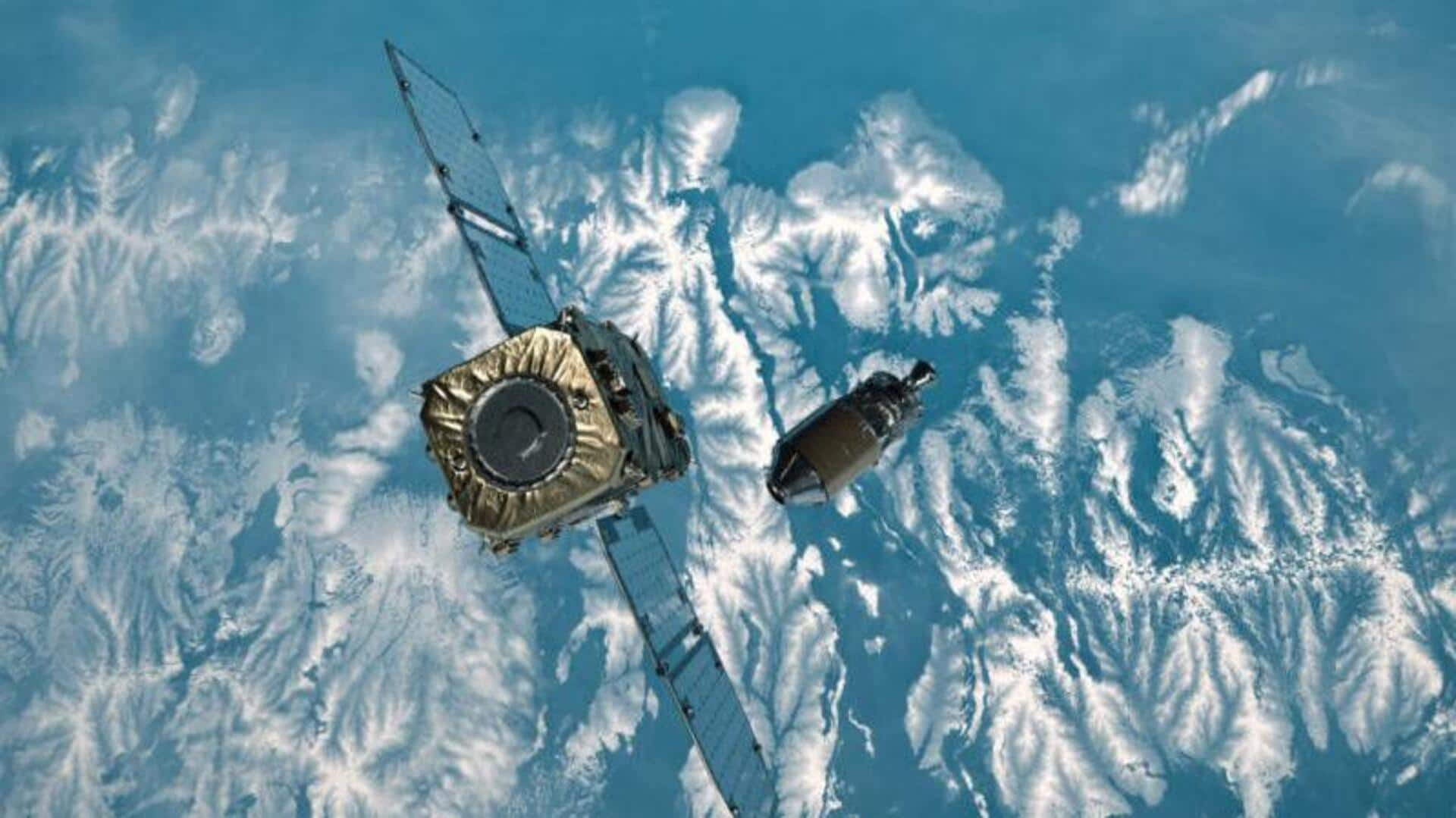
Japanese satellite successfully interacts with space debris, snaps image
What's the story
In a significant space mission, a Japanese satellite has successfully interacted with a three-ton chunk of rocket debris, BBC reports. The satellite, created by Astroscale Japan Inc., located and captured an image of the 15-year-old rocket fragment. Launched in February this year, the Astroscale satellite used onboard cameras, and precise calculations to approach the rocket debris without causing any disturbance. The mission's primary objective was to photograph the debris, document its state, and test the satellite's ability to approach it.
Debris management
Astroscale plans to launch another satellite
Astroscale Japan Inc. has plans to deploy another satellite equipped with robotic arms for managing space junk. The company aims to safely remove the debris from orbit, as stated in its announcement. The space debris under examination is from a Japanese rocket that launched an environmental sensing satellite in 2009. This initiative is part of Astroscale's broader efforts to address the growing issue of space debris, which poses significant challenges for both private companies and governments worldwide.
Space threat
Space debris is a rising concern
Space debris is a rising concern due to our reliance on orbiting satellites, for sophisticated communications and other essential tasks. NASA estimates that tens of thousands of space junk pieces larger than 10cm are already orbiting Earth, along with an astonishing 500,000 pieces between one to 10cm in diameter. As of 2022, over 9,000 metric tons of space debris are orbiting our planet. This space junk poses potential collision risks that could disrupt Earth's communications or endanger astronauts.
Historic capture
ADRAS-J satellite captures close-up image of space debris
Astroscale's ADRAS-J satellite has successfully captured a close-up image of its target—the spent upper stage of a Japanese H-2A rocket, that launched the GOSAT Earth-observation satellite in 2009. The company announced on April 26, 2024, "Behold, the world's first image of space debris captured through rendezvous and proximity operations during our ADRAS-J mission." This interaction validates technologies that future spacecraft could utilize to service satellites, or capture and de-orbit debris objects.